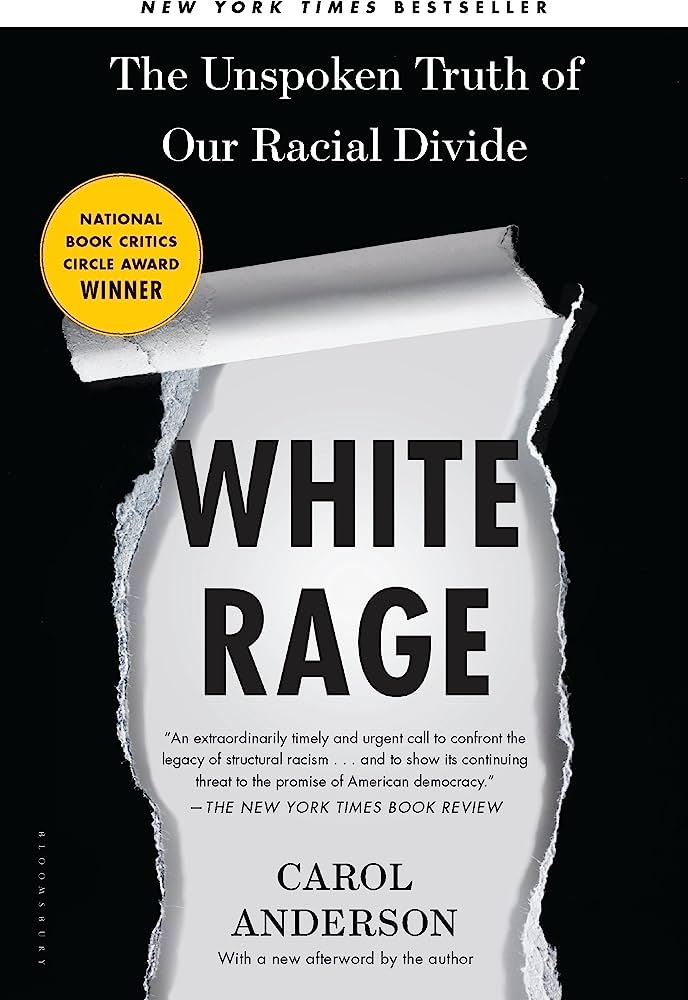In the book White Rage: The Unspoken Truth of Our Racial Divide, Carol Anderson confronts structural racism’s legacy conveyed through white resentment and shows how its persistence threatens the promise of America’s democracy.
Anderson explores historical events like the Civil War, Reconstruction, passage of the Thirteenth Amendment, Civil Rights Act, the decision in Brown v. Board Education, and Voting Rights Act, among others, as actions that motivate and legitimize white rage instead of promoting a collective will that allows fiscal responsibility, protection, and democracy for all.
The book’s main objective is to introduce a new dimension to the national debates on the racial divide in America, particularly the attempts to disrupt the country’s progress in achieving multicultural democracy.
Overall, Anderson argues that racial progress in the United States always comes at a price. White rage or white supremacy always pushes back every time African Americans make democratic and equality strides by creating policies that undermine this advancement. Policies include criminal sentencing laws for drug-related charges and voter ID laws that promote voter suppression and are likely to destroy multicultural democracy by targeting a certain community.
Anderson supports her argument by citing historical events by exploring how the white rage concept has operated and manifested in America. For instance, after the Supreme Court decided to integrate schools, the Southern Manifesto was signed by over 100 Congressmen who swore to use any means necessary to defy the ruling. Specifically, states started creating policies to prevent public school integration by providing state-funded tuition for white children and all-white private learning institutions while trying to shut down the entire public school system.
The war on drugs is another instance Anderson links to white rage policies after the Civil Rights movement, Civil Rights Act, and Voting Rights. Although African Americans used other drugs except for marijuana less, they were incarcerated disproportionately at a higher rate, making the community incarceration levels short-circuit gains offered by the Civil Rights Act, access to education, and Voting Rights Act. People with felony convictions were also denied housing, especially in Florida.
Besides these case studies, the author uses credible sources like newspapers such as Florida’s Palm Beach Post, and official reports about these historic events. Anderson uses these sources to work through periods of the United States’ history. He identifies instances that create a framework for the reader to understand the white rage concept and build a historical case for white supremacy.
By describing what white rage looks like in the present and past, Anderson manages to convince readers that a persistent social, political, and economic issue disadvantages the minority. Additionally, Anderson adds a new dimension to the conversations about race and the racial divide by discussing how white rage contributes to structural racism. The book is relevant and fits well in a survey on American history because it identifies specific white rage instances in historical events like the election of former President Barack Obama, public school system integration, the Civil Rights Movement, the Great Migration, and Reconstruction, among others.
The historical case studies explain how institutions and people continue to utilize physical and legal acts to dismantle multicultural democracy and minority social, economic, and political advancement. Anderson brings information not covered in books by distinguishing between the white rage concept and other common terms, especially white privilege.
Work Cited
Anderson, Carol. White rage: The unspoken truth of our racial divide. Bloomsbury Publishing USA

